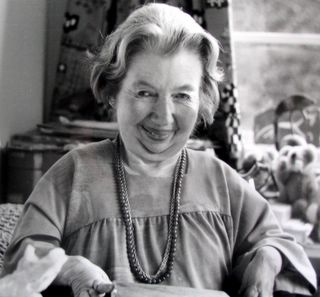Title of the work
Country of the First Edition
Country/countries of popularity
Original Language
First Edition Date
First Edition Details
Rosemary Sutcliff, Black Ships Before Troy: The Story of The Iliad, iIl. Alan Lee. London: Frances Lincoln Ltd., 1993, 128 pp.
ISBN
Awards
1993 – Alan Lee won the 1993 Kate Greenaway Medal from the Library Association for the best British children’s book illustration for Black Ships Before Troy.
Genre
Chapter book*
Mythological fiction
Target Audience
Children (10+)
Cover

We are still trying to obtain permission for posting the original cover.
Author of the Entry:
Miriam Riverlea, University of New England, mriverlea@gmail.com
Peer-reviewer of the Entry:
Elizabeth Hale, University of New England, ehale@une.edu.au
Susan Deacy, University of Roehampton, s.deacy@roehampton.ac.uk

Alan Lee by T.M.Eckrich. Retrieved from Wikipedia, licensed under CC BY-SA 4.0 (accessed: February 2, 2022).
Alan Lee
, b. 1947
(Illustrator)
Alan Lee was born and grew up in London, UK, and studied at the Ealing School of Art. Enchanted by myth and fairy tales from a young age, his book Faeries (1978), created with his friend Brian Froud, has sold more than a million copies and is regarded as a fantasy classic. His romantic watercolour paintings and pencil sketches have been compared to the work of Edmurd Dulac and Arthur Rackham. In addition to illustrating dozens of fantasy books, he has also worked as a conceptual designer on Peter Jackson’s Lord of the Rings trilogy of films, as well as set design for Legend (1985), Erik the Viking (1989), King Kong (2005) and the TV series Merlin (1998). He works out of a studio in Dartmoor.
Sources:
Official website (accessed: October 20, 2020).
David Barnett, Making fantasy reality: Alan Lee, the man who redrew Middle-earth, theguardian.com, published September 3, 2018 (accessed: October 20, 2020).
Bio prepared by Miriam Riverlea, University of New England, mriverlea@gmail.com

Courtesy of Anthony Lawton.
Rosemary Sutcliff
, 1920 - 1992
(Author)
Award winning and internationally well-known children’s writer Rosemary Sutcliff was born in Surrey, UK on December 14th, 1920. Her father was a naval officer and she spent her childhood in Malta and other naval bases. She suffered from Still's Disease, a form of juvenile arthritis, and was confined to a wheelchair for most of her life. She did not attend school or learn to read until she was nine years old, but her mother introduced her to the Saxon and Celtic legends, Icelandic sagas, the works of Rudyard Kipling, and fairy tales that became the basis for her historical fiction and other stories. After attending Art School and learning to paint miniatures, she turned to writing. She published her first book, The Adventures of Robin Hood, in 1950, followed soon after by her best-known novel, The Eagle of the Ninth (1954), about the Romans in Britain. It is still in print today and been adapted into a film, TV, and radio series.
She wrote over 60 books, predominantly historical fiction for children. Her stories span settings from the Bronze Age, the Dark and Middle Ages, Elizabethan and Tudor times, the English civil war to the 1800s. In 1959 she won the Carnegie Medal for The Lantern Bearers, and was a runner up for other books. She was a runner up for the Hans Christian Andersen medal in 1974. In the same year she was made an OBE (Order of the British Empire) for her services to children’s literature, and was promoted to a CBE (Commander of the British Empire) in 1992, the year she died. Two works based on Homer’s epics, Black Ships Before Troy (1993) and The Wanderings of Odysseus (1995), were published posthumously. Sutcliff spent much of her later life in Walberton, Sussex, in the company of her father, house-keeper, gardener and various dogs. In her memoirs, Blue Remembered Hills (1983) she recounted her life up to the publication of The Eagle of the Ninth.
Source:
Official website (accessed: October 20, 2020).
Bio prepared by Miriam Riverlea, University of New England, mriverlea@gmail.com and David Walsh, University of Kent, D.J.Walsh-43@kent.ac.uk
Translation
Czech: Černé lodě před Trójou: příběh z Íliady, ill. Alan Lee, trans. Matouš Ibl, Praha: Knižní klub, 1998.
Korean: T'ŭroia chŏnjaenggwa mokma: Iliadŭ iyagi, trans. Yun-gi Yi, Seoul: Kukminsŏgwan, 1997.
Spanish: Naves negras ante Troya: la historia de la "Ilíada", ill. Alan Lee, trans. José Ramón Insa, Barcelona: Vicens Vives, 2015.
Summary
Published posthumously in the year following her death, Sutcliff’s Black Ships Before Troy purports to be a retelling of the Iliad, but in fact begins much earlier than Homer’s poem, with the story of the Golden Apple and the Judgment of Paris, and concludes with the Wooden Horse and the Fall of Troy.
There are nineteen chapters, followed by a Pronunciation Guide and Bibliography. "The Golden Apple" describes the wedding of Peleus and Thetis, and Paris’ decision to award the apple to Aphrodite, incurring the enmity of the two rejected goddesses. In "Ship-Gathering" Menelaus calls on his brother to amass an army to get Helen back from the Trojans, and Thetis fails to keep Achilles from joining the fleet. The story aligns with the Iliad in the third chapter, "Quarrel with the High King", in which Agamamnon is forced to give up Chryseis after plague comes to the Greek camp, and takes Achilles’ prize Briseis as compensation. Achilles withdraws from the fight. "Single Combat" describes Menelaus and Paris fighting while Priam and Helen watch from Troy’s battlements, and the moving final meeting of Hector, Andromache and Astyanax. In the "High King’s Embassy" Odysseus leads an embassy to Achilles’ camp, imploring him to return to assist the embattled Greek army, and in "The Horses of King Rhesus" Odysseus and Diomedes undertake a night raid on a new Trojan ally. The battle intensifies in "Red Rain", and in "Battle for the Ships" Patroclus begs Achilles to borrow his armour and fight in his place. Achilles finally gives his consent, and in "The Armour of Achilles" Patroclus pushes the Trojans back to the city walls before being slain by Hector. Achilles is stricken with grief, and after visiting his mother and receiving a new set of armour, goes after Hector in "Vengeance for Patroclus". Hector lies unburied and dishonoured in "Funeral Games", until King Priam undertakes the dangerous journey to the enemy camp in "Ransom for Hector".
The following chapter, "The Luck of Troy", departs from the Iliad to follow other traditions, describing Odysseus’ theft of the Palladium from the Temple of Aphrodite. In "Warrior Women" the Amazons come to Troy, and Achilles slays their Queen Penthesileia. In "The Death of Achilles" Paris shoots a poisoned arrow through Achilles’ heel, the one vulnerable spot in his body. Odysseus is awarded Achilles’ armour and Ajax suicides after a fit of madness. "Poisoned Arrow" brings the archer Philoctetes back to Troy, from his exile on Lemnos. In "The Wooden Horse" Odysseus constructs a ruse to end the war, and in "The Fall of Troy" the city finally falls to the Greeks.
Alan Lee’s illustrations figure on almost every page. The title page for each chapter features a stylised border underneath a painting that bleeds to the top edges of each double page spread. Favouring a muted palette of greys, blues and browns, Lee’s watercolour paintings are realistic, drawing on the architecture and iconography of the ancient Mediterranean, particularly the Minoan civilisation. The violence of the war is graphically conveyed, with the river running red with blood (pp. 72–73), the sea monster strangling Laocoon (pp. 114–115) and the city in flames (pp.122–123) particularly grisly images.
Analysis
Comprehensive retellings of the Trojan War saga written for children, such as Sutcliff’s, have played a key role in disseminating misconceptions about the scope of Homer’s Iliad, and in particular that the poem recounts the death of Achilles, the ruse of the wooden horse, and the fall of Troy. While these events are alluded to and foreshadowed within the Iliad, many people without formal knowledge of the poem are surprised to learn that it spans only 40 or so days in the final year of the war, and ends before Achilles is killed and while the city still stands.
Black Ships Before Troy is a serious, detailed, absorbing retelling of Homer’s epic. It captures the emotional intensity of Achilles, and charts the chain of events that lead to his inevitable and glorious death. Odysseus also looms large in the narrative, through his nighttime raid on the camp of Rhesus, the theft of the Palladium, and the ingenious trick of the Wooden Horse. One of the most arresting pages depicts the Horse’s construction. Sutcliff evokes Homer’s poetry in the metre and archaic language of her description:
"Next day half the war-host, with axes in their hands, went to fell trees in the woods that skirted Mount Ida. They felled oak and pine and maple, and harnessed mules to the trunks and hauled them down into the camp. Epeius and his men hewed the raw timber into plans and shaped pieces. In three days the gigantic horse was finished, its proud crest upreared taller than the roof ridge of Agamemnon’s hall, and in its belly dark space for a score of men." (p.111)
In Lee’s illustration the horse resembles the skeleton of a living creature, with rib cage and skull; so massive that it dwarfs the men crafting it and their ships lined up behind them. This evocative image is starkly different from so many visual representations of the Wooden Horse in children’s literature, where it is usually depicted as manifestly wooden, and often cute and whimsical as well. In the next chapter, "The Fall of Troy", the men inside the horse are crowded into the top third of the page above the title page border, while one warrior, impossibly large with shield and crested helmet, descends by rope into the clear white space of the facing page. The layout vividly conveys the tension of the scheme and the superiority of the Greeks as they unleash their force on the besieged city.
Further Reading
Meek, Margaret, Rosemary Sutcliff, New York: Henry Z. Walck, 1962.
Riverlea, Miriam, My First Book of Greek Myths: Retelling Ancient Myths to Modern Children, PhD Thesis, 2017, bridges.monash.edu (accessed: October 20, 2020).
Review, kirkusreviews.com (accessed: October 20, 2020).


